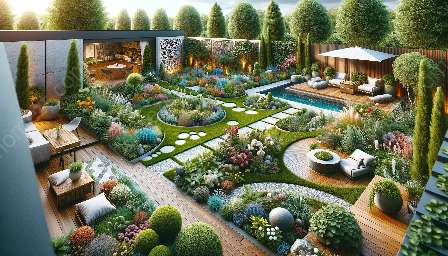Urban garden design presents unique challenges and opportunities for gardeners, landscape architects, and urban planners. In this article, we will explore the complexities of designing and maintaining gardens in urban spaces, and how these challenges can be turned into opportunities for creating sustainable and beautiful green spaces.
Challenges
Urban garden design faces several challenges due to the limited space, soil quality, and environmental factors in urban areas. Some of the key challenges include:
- Space Limitations: Urban areas often have limited space for gardens, making it challenging to design and create green spaces that are both aesthetically pleasing and functional.
- Soil Quality: Many urban areas have poor soil quality due to pollution and lack of nutrients, making it difficult for plants to thrive.
- Environmental Impact: Urban gardens may be exposed to pollution, extreme temperatures, and urban development activities, impacting the health and growth of plants.
Opportunities
Despite these challenges, urban garden design also presents numerous opportunities for innovation and creativity. Some of the opportunities in urban garden design include:
- Sustainable Design: Urban gardens provide a platform for sustainable design practices, such as vertical gardening, rooftop gardens, and community gardens, which can contribute to the overall well-being of urban communities.
- Community Engagement: Urban gardens can serve as a focal point for community engagement and social interaction, offering spaces for education, recreation, and relaxation.
- Biodiversity Promotion: By creating diverse and ecologically friendly urban gardens, opportunities arise to promote biodiversity and support local ecosystems in urban environments.
Sustainable Solutions
To address the challenges and make the most of the opportunities in urban garden design, sustainable solutions are essential. These solutions include:
- Green Infrastructure: Integrating green infrastructure, such as green roofs and living walls, into urban design can contribute to mitigating the environmental impact of urbanization and improving air quality.
- Water Conservation: Implementing water-efficient irrigation systems and rainwater harvesting techniques can help urban gardens thrive while conserving water resources.
- Native Plant Selection: Choosing native plants that are well-adapted to urban conditions can enhance the resilience of urban garden designs and promote local biodiversity.
Conclusion
Urban garden design presents a host of challenges, from limited space and soil quality to environmental impact. However, by adopting innovative and sustainable solutions, these challenges can be transformed into opportunities for creating thriving green spaces that benefit urban communities and the environment. By embracing sustainable practices, promoting biodiversity, and engaging with the community, urban garden design can play a pivotal role in shaping healthy and sustainable urban environments.



